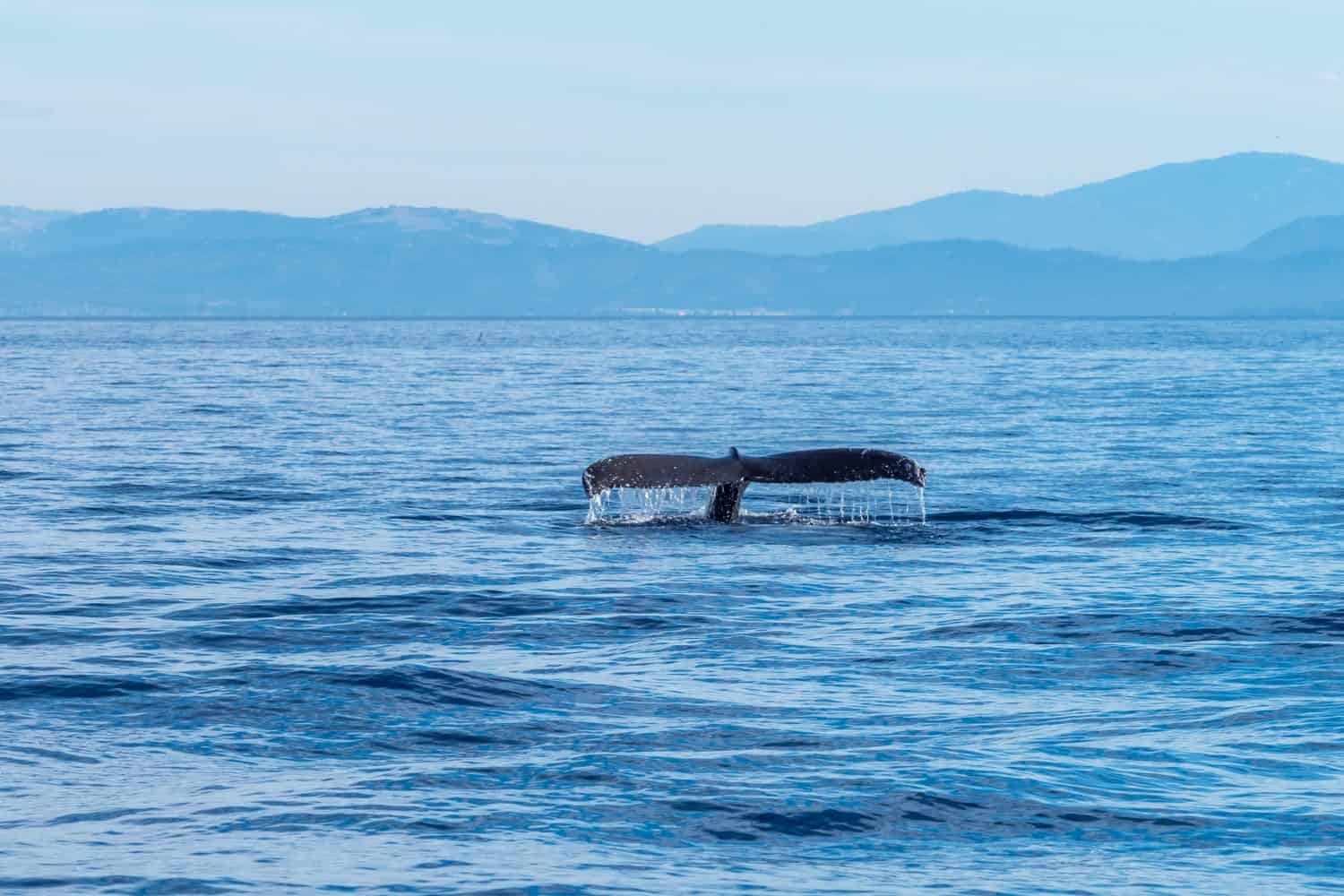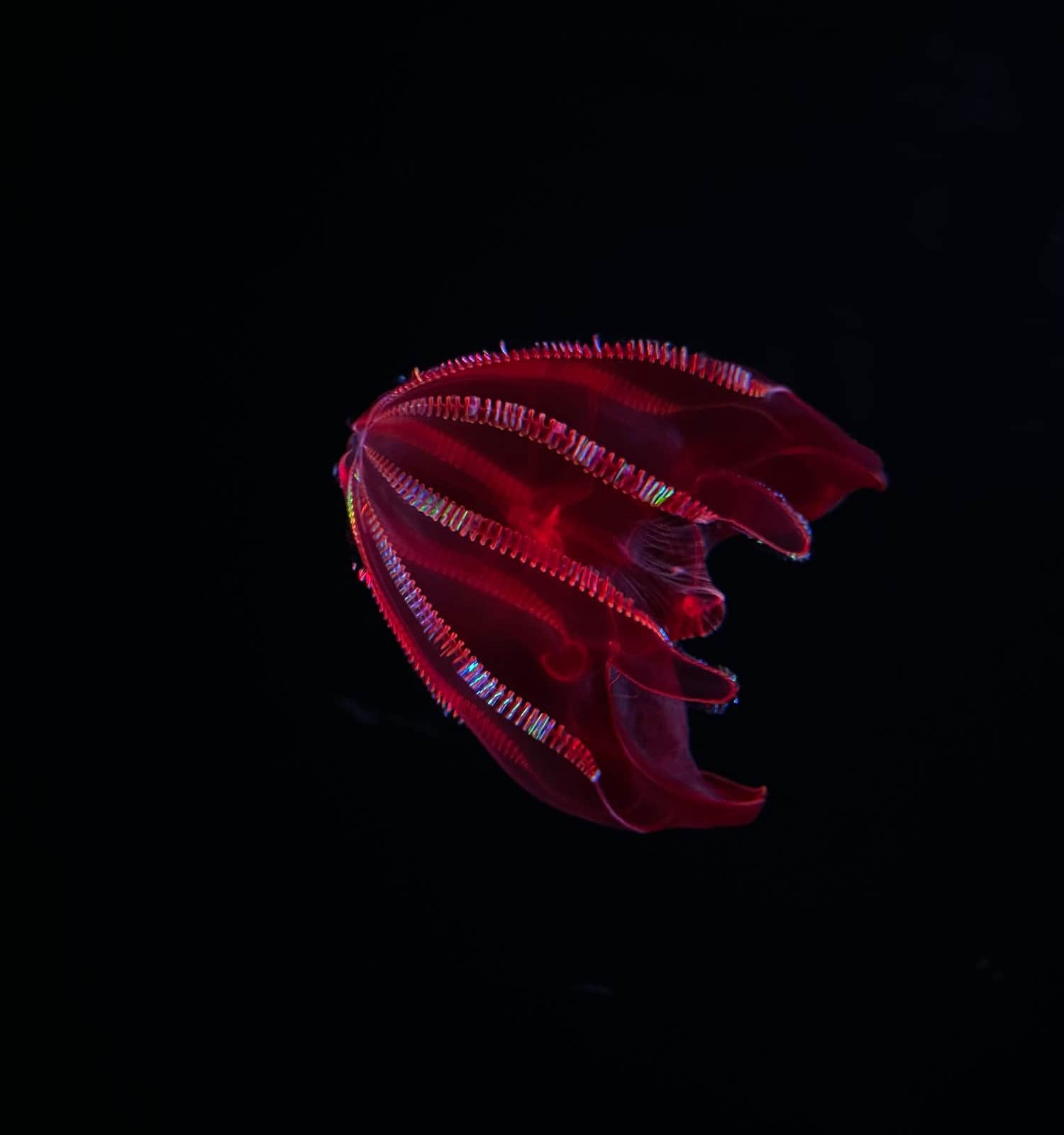Travel a few hours south of San Francisco and you’ll arrive at a gorgeous stretch of shoreline known as Monterey Bay.
This Pacific Ocean bay is renowned for its rich and diverse marine ecology. Large whales are often spotted there during migration. It’s a habitat and stopover point for 94 species of seabirds along with seals, sea lions, and sea otters. Fish that inhabit the bay include rockfish, mackerel, salmon, and the prized California halibut.

Large whales are often seen in Monterey Bay during migration in winter and early spring.
©MightyPix/Shutterstock.com
The most unique and dramatic feature of the bay, however, will be found under its cool blue waters — the Monterey Canyon. Starting near the shoreline at Moss Landing, the canyon bisects Monterey Bay and heads out to the sea.
Along the way, its ragged cliffs and valleys form a 292-mile (470-kilometer) channel. Its canyon walls are over a mile (1,700 meters) deep. It’s over seven miles (12 kilometers) wide at its broadest point.
But the underwater landscape gets even more phenomenal where the bay reaches out to touch the ocean.
An Underwater Grand Canyon
In 1998 the Monterey Bay Aquarium Research Institute (MBARI) began mapping Monterey Canyon using a variety of sonar equipment along with a robotic underwater vehicle.
What the MBARI has found over the years not only helps to answer long-held questions about Monterey Canyon but also gives a view into how massive it is. Considered one of the deepest submarine canyons on the West Coast, it reaches a depth of 2.5 miles (4,000 meters) at the abyssal plain to which it extends. (An abyssal plain is a flat area of ocean floor where the seabed is at its deepest.)
To put that in perspective, the south rim of the Grand Canyon is only 1.3 miles (2,100 meters) high.
An Avalanche of Sediment
Although the Monterey Canyon is often compared to the height of the Grand Canyon, its origins are quite different.
The Grand Canyon was formed millions of years ago by tectonic activity in the Colorado Plateau, and shaped by the cutting, or carving, action of the Colorado River.
The Monterey Canyon evolved due to moving currents, which have been described as underwater avalanches that shaped the canyon’s walls. They consist of sand and gravel sediment which is transported by waves and gradually builds up in the canyon.
And there the sediment sits, until something, be it a storm or ground movement, “destabilizes” it. At that point, it can become “a fast-moving slurry of seawater and sand,” called a “turbidity current.” Millions of years of such currents have carved the canyon into its present shape.
These turbidity currents still happen several times a year within the top 12 miles of the canyon. Scientists have discovered that although such currents are quite rare in the deeper areas, there is currently a build-up of sediment in the canyon. A major geological event, such as a failure of the canyon wall or a catastrophic earthquake, could dislodge this sediment, setting off what’s called a “local tsunami.”
Creatures of the Dark
In the waters at the midway depth of the Monterey Canyon, some of the most unusual creatures live. Although dwelling in the dark, without sunlight filtering through the water to support plant life, they have adopted other means of surviving this extreme environment.

The bloody-belly comb jelly’s red hue makes it invisible in the deep, dark waters of Monterey Canyon.
©Takokat/Shutterstock.com
One of the more curious creatures found floating around the canyon includes the bloody-belly comb jelly (Lampocteis cruentiventer). This stunning deep red jelly, which looks like a glowing alien, is invisible in the deep waters of the canyon. Red, at those depths, acts like a Harry Potter “cloak of invisibility.” This invertebrate was only first described 20 years ago by MBARI biologists.
Macrofauna, such as tiny snails, worms, and clams live at the muddy bottom of the canyon. These creatures feed on sediments, along with the remains of plants and decaying animals that drift down to the seafloor. A 2010 study found that there’s more food — in the form of nutrient-rich sediment — in Monterey Canyon than imagined.
“The stuff that rains down from above and accumulates at the base of the cliffs isn’t just mud, it’s food,” said marine biologist Craig McClain. “There are tiny food particles and bacteria in the sediment.”
Although the Monterey Canyon has been extensively studied for several decades, it still holds many more secrets.
As NASA scientist Dr. Gene Feldman says, “We have better maps of the surface of Mars and the moon than we do of the bottom of the ocean.”
The photo featured at the top of this post is © Nikolas_jkd/Shutterstock.com
Thank you for reading! Have some feedback for us? Contact the AZ Animals editorial team.







